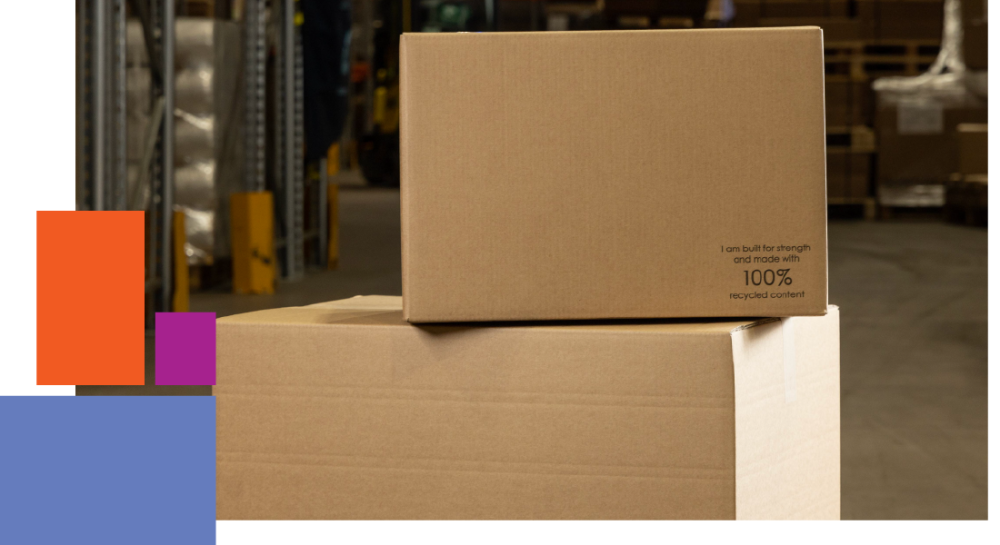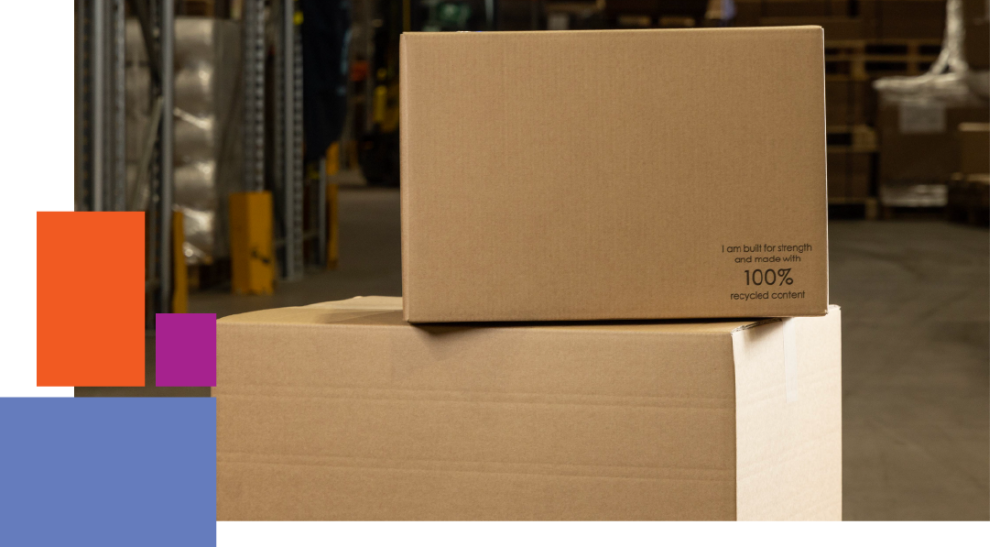Precisely measuring a cardboard box is important. Knowing the specific dimensions of the boxes you need can save time when you’re purchasing them. Plus, ensuring you have the right size cardboard box can help you protect your products more effectively, reduce courier costs and minimise packaging waste.
For example, if a box is too big, the product can move around and get damaged, or you’ll be forced to use excess void fill.
Choosing the right size cardboard box is all about finding the optimum size for your product and allowing for sufficient in-box protection. This short guide will walk you through the step-by-step process of measuring a cardboard box.
Tools You'll Need
A measuring tape
A flat surface, like a table or packing bench
A notepad and pen for recording measurements
Step 1: Understanding the dimensions of a cardboard box
Cardboard box measurements are usually expressed in three dimensions:
1. Length (L) - the longest side of the box when looking at the top opening.
2. Width (W) - the shorter side of the box when looking at the top opening.
3. Height (H) - the vertical distance from the top opening to the bottom of the box. This is sometimes called “Depth” instead of “Height”.
The measurements typically expressed in this order and the unit of measurement is usually millimetres (mm). You will usually find that cardboard box measurements shown online are the internal or usable dimensions.
For example, 300 x 300 x 200mm or 450mm x 300mm x 375mm
Top tip: Cardboard box measurements can be expressed in centimetres (cm) or inches too.
Check out the handy conversion chart below.
| 10mm = 1cm |
| 100mm = 10cm |
| 1000mm = 1m |
| 1 inch = 2.54cm / 25.4mm |


Step 2: Positioning your box to take an accurate measurement
Put your box on a level, flat surface. This will keep it stable, so you can take an accurate measurement. The open part of the box should be facing upwards.
For smaller boxes, placing then on a packing bench or table is a great choice. For large boxes, you may want to place them on the floor, but remember to follow health and safety guidelines when bending.


Step 3: Measure the Length
Using your tape measure, measure the longest side of the box from one edge to the other, inside the box.


Step 4: Measure the Width
Next, measure the shorter side of the box from one edge to the other, inside the box.


Step 5: Measure the Height / Depth
Lastly, measure the vertical distance from the top opening of the cardboard box to the
bottom, inside the box.


Step 6: Verify External Dimensions (optional)
If you need to know the external dimensions of the box for calculating postage or courier costs, you can perform the same exercise again, but on the outside of the carton.
When looking at the size of cardboard boxes online, which are expressed in internal measurements, the outer dimensions will depend on the thickness of the cardboard used to make the box and be slightly bigger.


Step 7: Double-Check Measurements
To ensure accuracy, re-measure each dimension. Small errors can accumulate, so confirming your measurements is a crucial step.
Additional Tips for Measuring a Cardboard Box
- Use an accurate tape measure - flexible measuring tapes are ideal for accurately measuring the dimensions of cardboard boxes. If you’re high-tech, you might want to use a digital tape measure that uses a laser to accurately gauge dimensions.
- Keep notes of your dimensions – noting your box dimensions on a spreadsheet or notepad can be helpful.
- Measure in millimetres – most cardboard box measurements are expressed in millimetres, this is a standard used by most cardboard box suppliers and manufacturers.
- Consider the cardboard grade when measuring outer dimensions- thicker cardboard will increase external dimensions. The thickness of the material used is described within the cardboard grade. An example is a double wall cardboard box, where two layers of carboard are used instead of one.
Bestselling Cardboard Boxes
Summary
Getting the measurements of your boxes right is critical if you want your packaging to be effective.
By following these steps, you can ensure that you have the precise dimensions of your cardboard box. For more hints and tips, explore our range of packaging advice Alternatively, the Macfarlane Packaging team are on hand to help.


